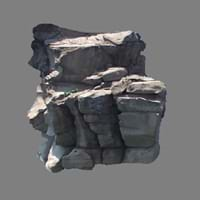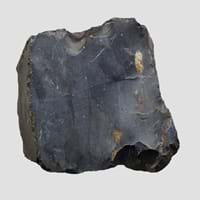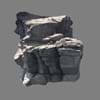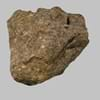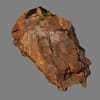Comendite and Chert
Definition
Definition
Comendite is a hard, peralkaline igneous rock, a type of light blue grey rhyolite
Chert is a hard, dark, opaque sedimentary rock which is composed of silica with an amorphous fine-grained texture
History
Origin
Italy
Unknown
Discoverer
Unknown
Unknown
Etymology
Comendite derives its name from the area of Le Commende on San Pietro Island in Italy
From flint-like quartz, 1670s, of unknown origin- a local term, which has been taken into geological use
Class
Igneous Rocks
Sedimentary Rocks
Sub-Class
Durable Rock, Hard Rock
Durable Rock, Hard Rock
Family
Group
Volcanic
Not Applicable
Other Categories
Medium Grained Rock, Opaque Rock
Fine Grained Rock, Opaque Rock
Texture
Texture
Porphyritic
Banded, Rough
Color
Blue, Bluish - Grey
Black, Brown, Green, Grey, Red, White
Maintenance
Less
Less
Durability
Durable
Durable
Water Resistant
Yes
Yes
Scratch Resistant
Yes
Yes
Stain Resistant
Yes
Yes
Wind Resistant
Yes
No
Acid Resistant
Yes
Yes
Appearance
Foliated
Glassy or Pearly
Uses
Architecture
Interior Uses
Countertops, Decorative Aggregates, Interior Decoration
Decorative Aggregates, Homes
Exterior Uses
As Building Stone, As Facing Stone, Garden Decoration
As Building Stone, As Facing Stone, Garden Decoration, Office Buildings
Other Architectural Uses
Curbing
Curbing
Industry
Construction Industry
Building houses or walls, Cement Manufacture, Construction Aggregate, for Road Aggregate, Landscaping, Making natural cement, Raw material for the manufacture of mortar
Arrowheads, Construction Aggregate, Cutting Tool, Spear Points
Medical Industry
Not Yet Used
Not Yet Used
Antiquity Uses
Artifacts
Artifacts, Monuments
Other Uses
Commercial Uses
Cemetery Markers
Creating Artwork, Gemstone, In fire-starting tools, Jewelry, To ignite fire, Used in flintlock firearms
Types
Types
Rhyolite
Flint, Jasper, Radiolarite, Common Chert, Chalcedony, Agate, Onyx, Opal, Magadi-type Chert, Porcelanite, Siliceous Sinter
Features
Very fine grained rock, It is One of the Oldest, Strongest and Hardest Rock
Clasts are smooth to touch, Easily splits into thin plates, Has High structural resistance against erosion and climate
Archaeological Significance
Monuments
Not Yet Used
Used
Famous Monuments
Not Applicable
Data Not Available
Sculpture
Not Yet Used
Not Yet Used
Famous Sculptures
Not Applicable
Not Applicable
Pictographs
Not Used
Not Used
Petroglyphs
Not Used
Not Used
Figurines
Not Yet Used
Not Yet Used
Fossils
Absent
Present
Formation
Formation
Comendite is a type of Igneous rock which is formed due to cooling and solidification of lava or magma. It may form with or without crystallization, either below the surface as intrusive rocks or on the surface as extrusive rocks.
Chert forms when microcrystals of silicon dioxide grow within soft sediments that become limestone or chalk. The chert formation can be either of chemical or biological origin.
Composition
Mineral Content
Albite, Amphibole, Quartz
Quartz, Silicon
Compound Content
Al, Fe, Potassium Oxide
Silicon Dioxide
Transformation
Metamorphism
Yes
No
Types of Metamorphism
Cataclastic Metamorphism, Regional Metamorphism
Not Applicable
Weathering
Yes
No
Types of Weathering
Biological Weathering, Chemical Weathering, Mechanical Weathering
Not Applicable
Erosion
Yes
Yes
Types of Erosion
Coastal Erosion, Water Erosion
Chemical Erosion
Properties
Physical Properties
Hardness
6-7
6.5-7
Grain Size
Medium Grained
Very fine-grained
Fracture
Pervasive
Uneven, Splintery or Conchoidal
Streak
Bluish Black
White
Porosity
Highly Porous
Highly Porous
Luster
Dull
Waxy and Dull
Compressive Strength
92.40 N/mm2
21
450.00 N/mm2
1
Cleavage
Not Available
Non-Existent
Toughness
2
1.5
Specific Gravity
2.38
2.5-2.8
Transparency
Opaque
Translucent to Opaque
Density
Not Available
2.7 g/cm3
Thermal Properties
Specific Heat Capacity
Not Available
0.74 kJ/Kg K
19
Resistance
Heat Resistant, Impact Resistant
Heat Resistant, Impact Resistant, Pressure Resistant, Wear Resistant
Reserves
Deposits in Eastern Continents
Asia
China
China, India, Iran, Japan, Oman, Russia, Saudi Arabia, Taiwan, Thailand, Vietnam
Africa
East Africa
Kenya, Morocco, South Africa, Tanzania
Europe
Italy
Austria, France, Greece, Italy, Malta, Poland, Portugal, Serbia, Spain, Sweden, United Kingdom
Others
Not Yet Found
Greenland, Mid-Atlantic Ridge
Deposits in Western Continents
North America
Not Yet Found
Canada, Mexico, USA
South America
Not Yet Found
Bolivia, Brazil
Deposits in Oceania Continent
Australia
Queensland
New South Wales, Queensland, South Australia, Western Australia
All about Comendite and Chert Properties
Know all about Comendite and Chert properties here. All properties of rocks are important as they define the type of rock and its application. Comendite belongs to Igneous Rocks while Chert belongs to Sedimentary Rocks.Texture of Comendite is Porphyritic whereas that of Chert is Banded, Rough. Comendite appears Foliated and Chert appears Glassy or Pearly. The luster of Comendite is dull while that of Chert is waxy and dull. Comendite is available in blue, bluish - grey colors whereas Chert is available in black, brown, green, grey, red, white colors. The commercial uses of Comendite are cemetery markers and that of Chert are creating artwork, gemstone, in fire-starting tools, jewelry, to ignite fire, used in flintlock firearms.
|
||
|
||
|
